Imagine standing on a sun-baked plain three million years ago. The air thrums with tension, and from the shadows, a feline steps into view—sleek, powerful, and unlike any cat alive today. This is Megantereon, a mysterious sabertooth whose journey linked two continents and redefined what it means to be a predator. Its story is a breathtaking fusion of survival, adaptation, and wild beauty—a legend etched into ancient earth.
The First Cat Across Continents

Megantereon wasn’t just another predator—it was a pioneer of its time. With fossils unearthed across both Africa and Eurasia, this sabertooth stands among the earliest big cats to venture beyond their original range, crossing ancient land bridges that once connected continents. Its bold dispersal helped lay the groundwork for future feline lineages, shaping the evolutionary paths of big cats for millennia to come. More than a hunter, Megantereon was a traveler and a catalyst—proof that even in the distant past, the wild was full of movement, change, and daring first steps.
Sabers Like No Other
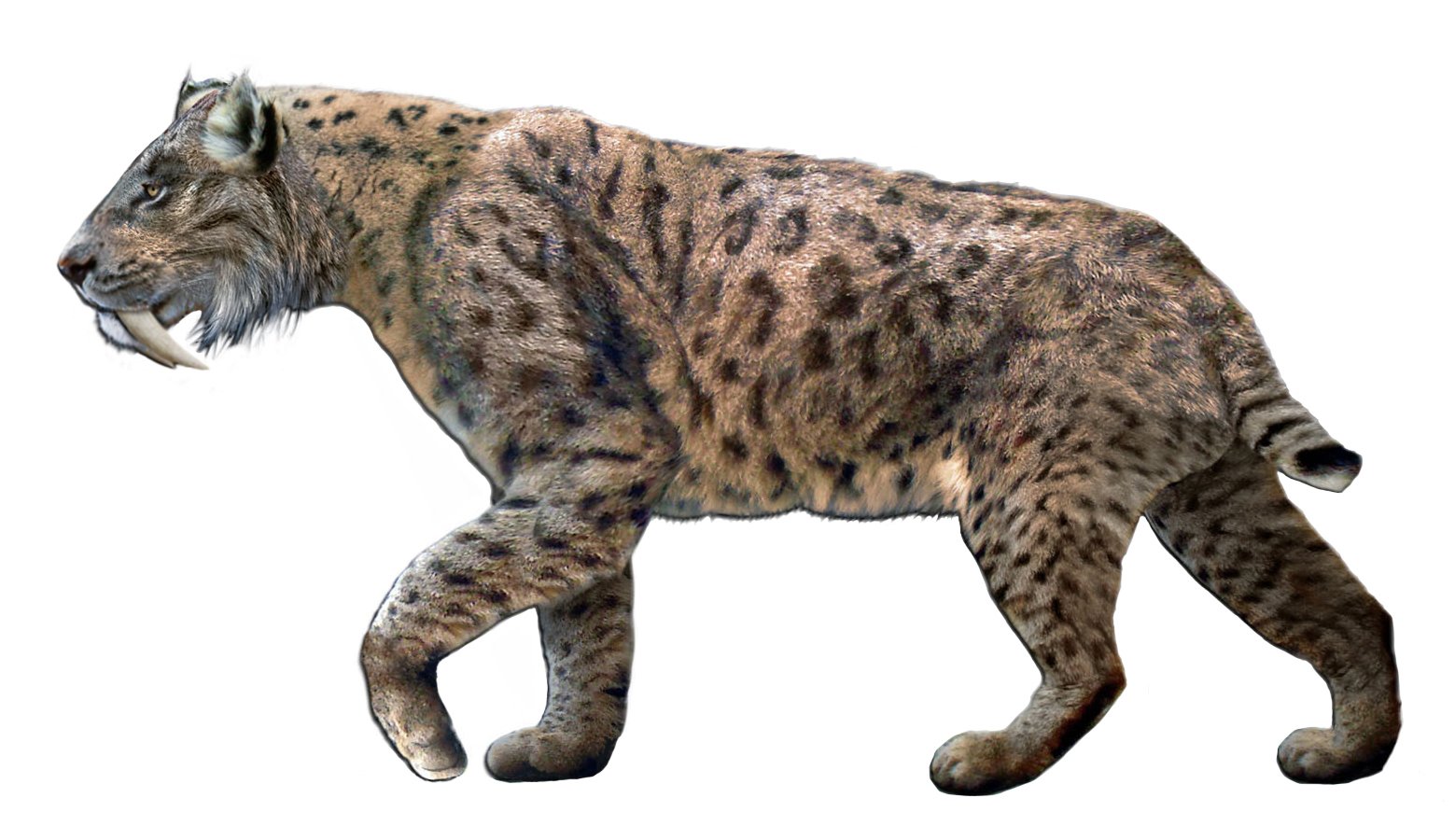
Megantereon’s upper canine teeth were strikingly long and blade-like—flattened daggers sculpted by evolution for precision and power. Unlike the conical teeth of modern big cats, these gleaming fangs were engineered to slice through tough hide and muscle with deadly efficiency. In the right moment, a single bite could bring down formidable prey, making Megantereon a specialist among predators. Their shape wasn’t just dramatic—it was a functional masterpiece that set this sabertooth apart from all others. In those fearsome canines, nature revealed both its creativity and its ruthlessness.
Muscular Elegance

This cat’s body was a remarkable study in contrasts—compact, yet powerfully built, every muscle primed for sudden, explosive action. Its limbs, sturdy but not overly elongated, offered the perfect balance between strength and control. This design allowed Megantereon to remain hidden in dense cover, then launch itself forward with startling speed and force. It wasn’t built for long chases, but for ambush—striking hard and fast before prey even sensed the danger. In form and function, it was a master of the surprise attack, honed by evolution for precision and power.
Eyes That Saw in Shadows
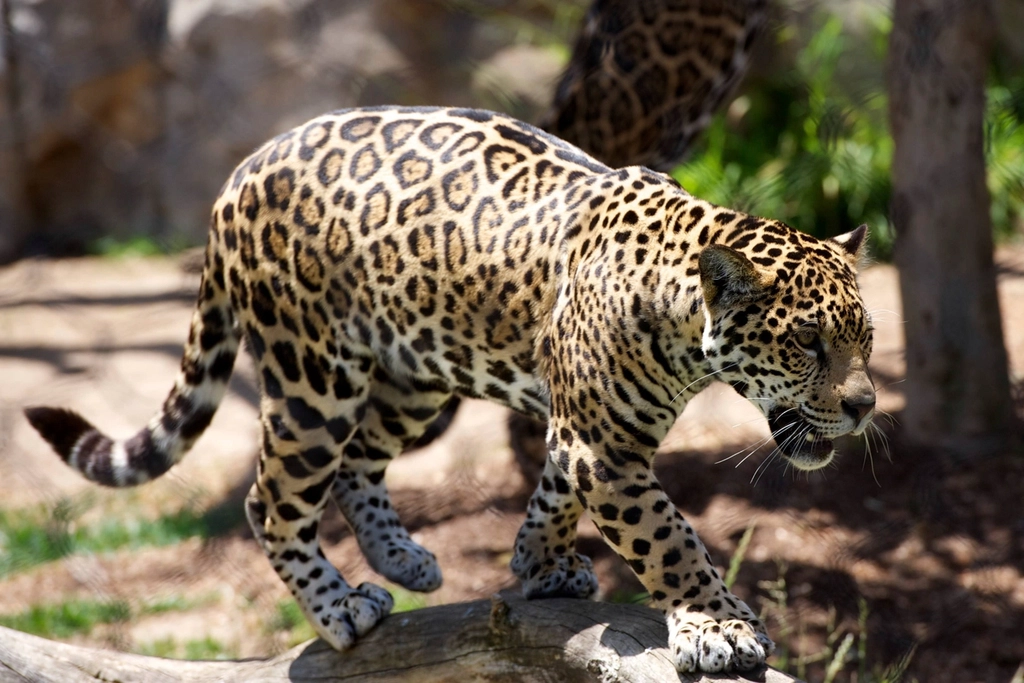
With forward-facing, wide-set eyes, Megantereon possessed exceptional depth perception—perfect for tracking movement in the low light of dawn or dusk. This visual advantage made it a formidable ambush predator, able to lock onto targets with eerie precision in the shifting shadows. Its intense, unblinking gaze wasn’t just a tool—it was a silent warning, a predatory focus honed by countless successful hunts. In the dim forest light, one glance could mean the difference between life and death. Behind those eyes lay a patient, calculating force, always watching, always waiting.
Thick Pelt for Harsh Worlds

Megantereon’s fur was likely dense, textured, and patterned—an evolutionary cloak perfectly suited for the wooded grasslands and forests it called home. This coat acted as both armor and illusion, shielding the cat from the elements while helping it vanish into shifting shadows and dappled light. Whether stalking through tall grasses or crouching beneath forest canopies, its camouflage made it nearly invisible to prey and rivals alike. In the ever-changing landscapes of ancient Africa and Eurasia, such concealment was crucial. Megantereon didn’t just survive—it disappeared until the exact moment it chose to strike.
Solitary Hunter’s Heart

Unlike today’s social lions, Megantereon likely lived and hunted alone, a solitary predator navigating its world with quiet determination. This lifestyle required more than just strength—it demanded sharp intelligence, unwavering patience, and the steely nerve to face danger without backup. Every hunt was a solo operation, relying on stealth, timing, and instinct honed through experience. These traits still live on in today’s solitary big cats like leopards and tigers, whose piercing eyes reflect that same ancient cunning. In Megantereon, we see the roots of a fierce, independent legacy that still stalks the wild today.
Ambush Master

Megantereon was not built for long, exhausting chases—it was a master of the ambush. Hidden in the underbrush or crouched in tall grass, it relied on patience and precision, watching for just the right moment to strike. When that moment came, it moved like a whisper—sudden, silent, and unstoppable. Its hunting style was a deadly blend of stealth and timing: a flicker in the shadows, a blur of fur and muscle, and then—stillness. In that silence lay its power: a predator that let the landscape hide it until it was far too late.
Prey of the Ancient Plains

Megantereon’s menu was as bold as it was strategic—grazing herds of antelope, wild horses, and even the occasional young elephant fell within its reach. But it didn’t hunt recklessly; this predator knew when to strike and when to wait. By targeting the weak, the young, or the inattentive, it ensured energy wasn’t wasted and injury was avoided. In doing so, Megantereon played a vital role in maintaining the balance of its ecosystem, keeping prey populations healthy and in check. It was a predator not just of power, but of precision and purpose.
Powerful Jaws, Gentle Bite

Despite its terrifying appearance, Megantereon wasn’t built for brute force. Its jaws lacked the crushing power of a lion’s, but that wasn’t a weakness—it was a specialization. Instead of relying on raw bite strength, Megantereon used its saber-like canines with surgical precision, aiming for vulnerable spots to slice through flesh and arteries. Each strike was calculated, efficient, and deadly—more like a scalpel than a sledgehammer. In a world of giants, it stood apart as a surgeon among beasts, proving that finesse could be just as lethal as force.
Roaming the Rift Valleys

From the sweeping grasslands of Africa’s Rift Valley to the shadowy forests of Eurasia, Megantereon thrived across vastly different terrains. This adaptability reveals more than physical strength—it speaks to a keen intelligence and an uncanny ability to adjust to changing environments. Whether stalking prey through open plains or weaving silently through trees, it mastered the landscapes it inhabited. Few predators of its time displayed such range and resilience. Megantereon wasn’t just surviving—it was thriving wherever opportunity called, a true testament to its evolutionary success.
A Family of Sabertooths

Megantereon was a proud member of the Machairodontinae, the legendary sabertooth lineage that would one day produce giants like Smilodon. But Megantereon was the trailblazer—the agile forerunner that ventured out first, testing new environments and paving the evolutionary road ahead. Smaller and more nimble than its heavyweight cousins, it combined adaptability with stealth, making it perfectly suited for exploration and expansion. In many ways, Megantereon was the bridge between ancient feline ancestors and the later apex predators that dominated the Ice Age. Its journey shaped the future of the sabertooth legacy.
Fossil Clues in Ancient Soil
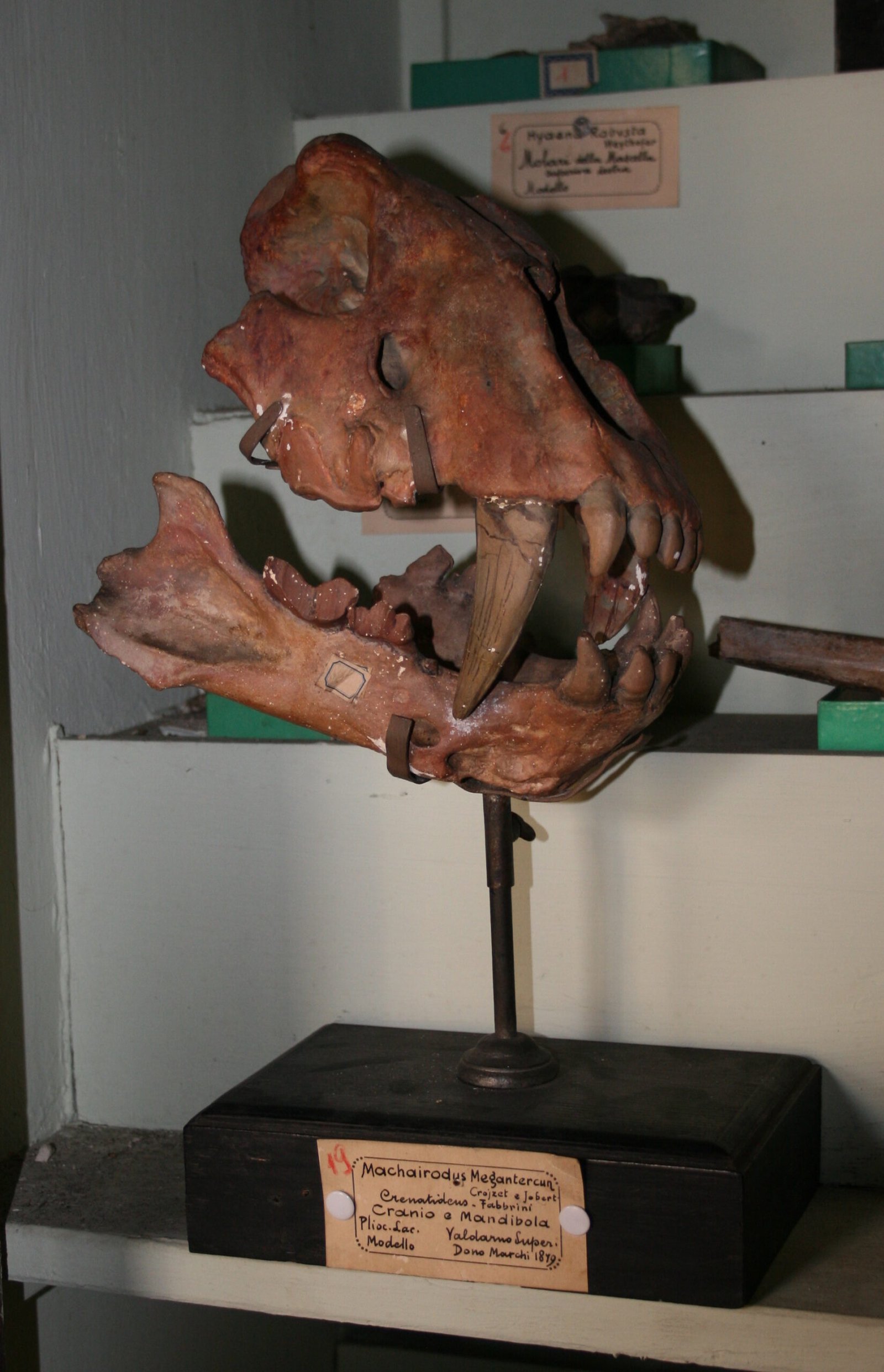
Paleontologists have uncovered Megantereon fossils scattered across a vast range—from the rugged hills of Spain to the plains of China, and from South Africa’s ancient soils to the river valleys of India. Each bone, tooth, or fragment is like a breadcrumb along the trail of its long and mysterious journey. Together, these finds help piece together a story of movement, adaptation, and survival across continents and climates. It’s a puzzle still being assembled, but with every new discovery, the life of this elusive sabertooth comes more sharply into focus.
Rivalry on the Savannah

Megantereon lived in a world teeming with danger and rivalry, sharing its territory with cunning hyenas, swift wolves, and even the first tool-using hominins. Every meal was a high-stakes contest, where speed, stealth, and strength determined who ate—and who went hungry. In such a fiercely competitive landscape, Megantereon had to stay sharp, adapting constantly to survive. But it wasn’t just reacting to its environment—it was shaping it. Its presence influenced the behaviors, movements, and survival strategies of other species, leaving an evolutionary imprint still faintly visible today.
Echoes in Modern Cats

Look into the eyes of a leopard, and you may glimpse the ancient spirit of Megantereon—an enduring blend of stealth, patience, and lethal precision. Though separated by millions of years, today’s big cats carry within them the genetic legacy of this early sabertooth pioneer. In every silent stalk and explosive pounce, there are echoes of Megantereon’s ancient prowess. Its instincts live on, passed down through time, etched not just in DNA but in every wary glance and calculated move. The wild still remembers—and so do its fiercest descendants.
Adaptation or Extinction

As climates shifted and familiar prey disappeared, Megantereon was forced to adapt—or perish. Some populations managed to adjust, expanding their range, altering their hunting habits, or turning to new food sources. Others, less fortunate, couldn’t keep pace with the changing world and quietly vanished. This story of resilience and loss is one that echoes throughout the history of life on Earth. Megantereon’s fate serves as a powerful reminder: survival often demands change, and those that can’t evolve face extinction. It’s a lesson etched in stone, still relevant today.
Feline Intelligence Revealed
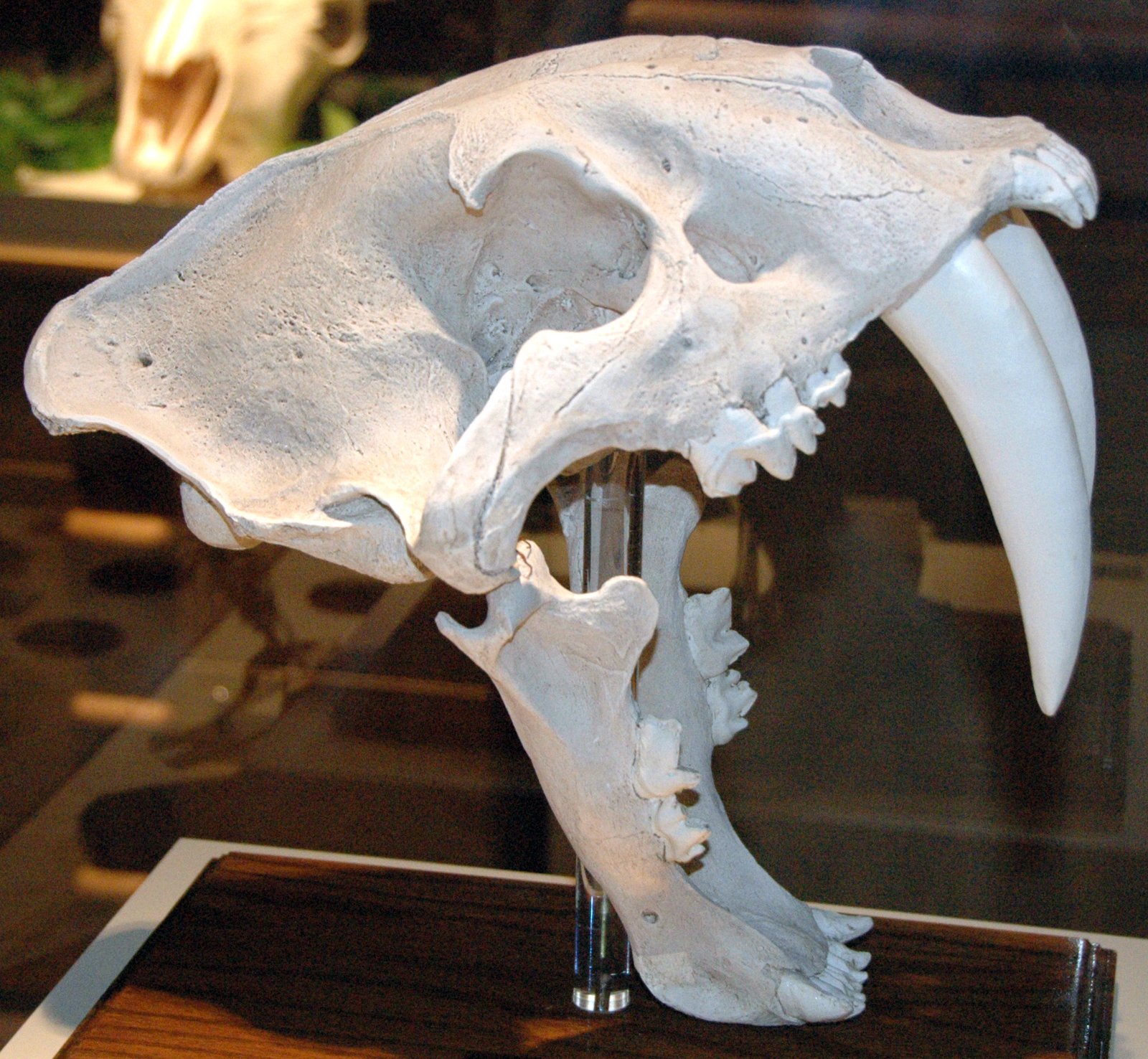
Megantereon’s braincase reveals more than just instinct—it suggests a predator with a sharp, adaptable mind. Successfully navigating unfamiliar terrain, reading shifting prey behavior, and competing with rival carnivores demanded intelligence as well as strength. This wasn’t a brute that relied solely on force; it was a calculated hunter, capable of planning, learning, and adjusting on the move. Its success across continents speaks to a creature that could outthink as well as outpace its challenges. In many ways, Megantereon was as much strategist as stalker.
Parenthood in the Wild
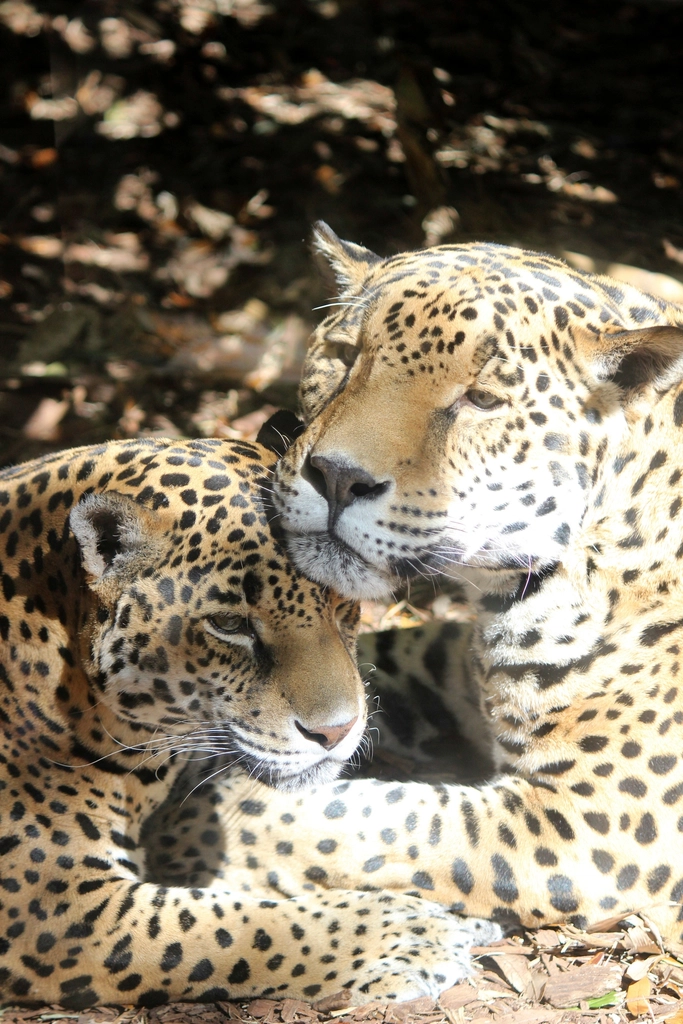
Though the fossil record leaves much to the imagination, it’s likely that Megantereon mothers raised their cubs in hidden dens tucked within dense brush or forest thickets. There, safe from predators and prying eyes, the young would have learned the ways of the hunt—through play, mimicry, and close observation. Every pounce and tumble was a lesson, every quiet moment a bond of fierce protection and guidance. Survival wasn’t just instinct; it was taught, passed down from mother to cub with patience and care. In those early lessons, the legacy of Megantereon took root—one generation at a time.
Vanished, But Not Forgotten
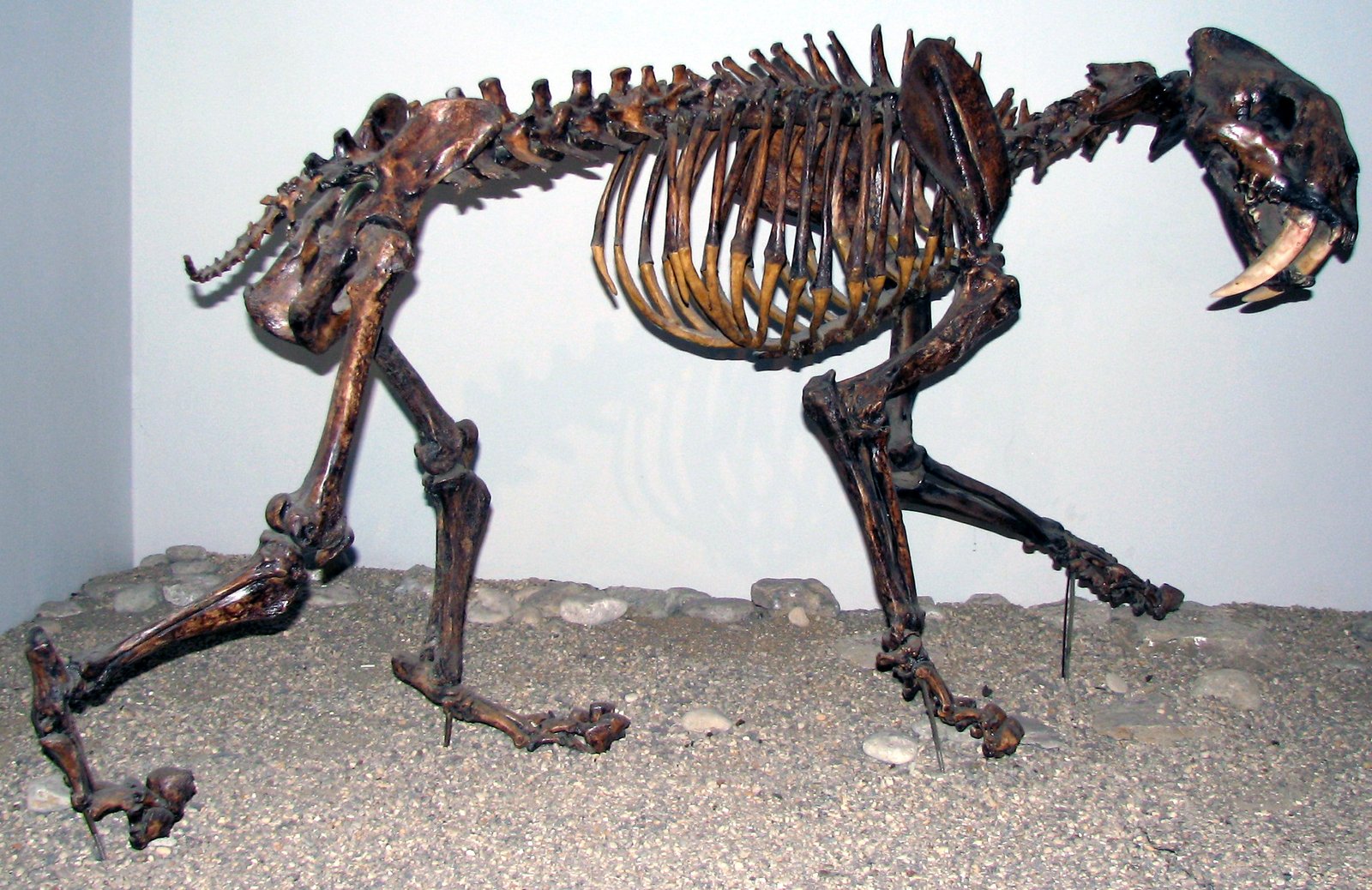
Megantereon vanished from the Earth around 1.5 million years ago, but its story is far from silent. Its bones, unearthed across continents, whisper of ancient hunts, migrations, and adaptations that helped shape the feline family tree. Though it no longer prowls the wild, Megantereon’s legacy endures—in the traits of modern big cats, in the balance of past ecosystems, and in the questions it leaves behind. It reminds us that extinction is not the end of influence. Even vanished cats continue to shape the living world, one fossil at a time.
Lessons for Conservation

Megantereon’s story isn’t just ancient history—it’s a mirror reflecting the challenges facing wild cats today. Just as shifting climates and disappearing prey once pushed this sabertooth to the edge, modern felines now face shrinking habitats, human encroachment, and accelerating environmental change. Its extinction serves as both warning and call to action: we must act now to protect the predators that still walk among us. Safeguarding their habitats means preserving not just species, but the living legacy of creatures like Megantereon. The past is speaking—it’s up to us to listen.
The Cat That Traveled Time
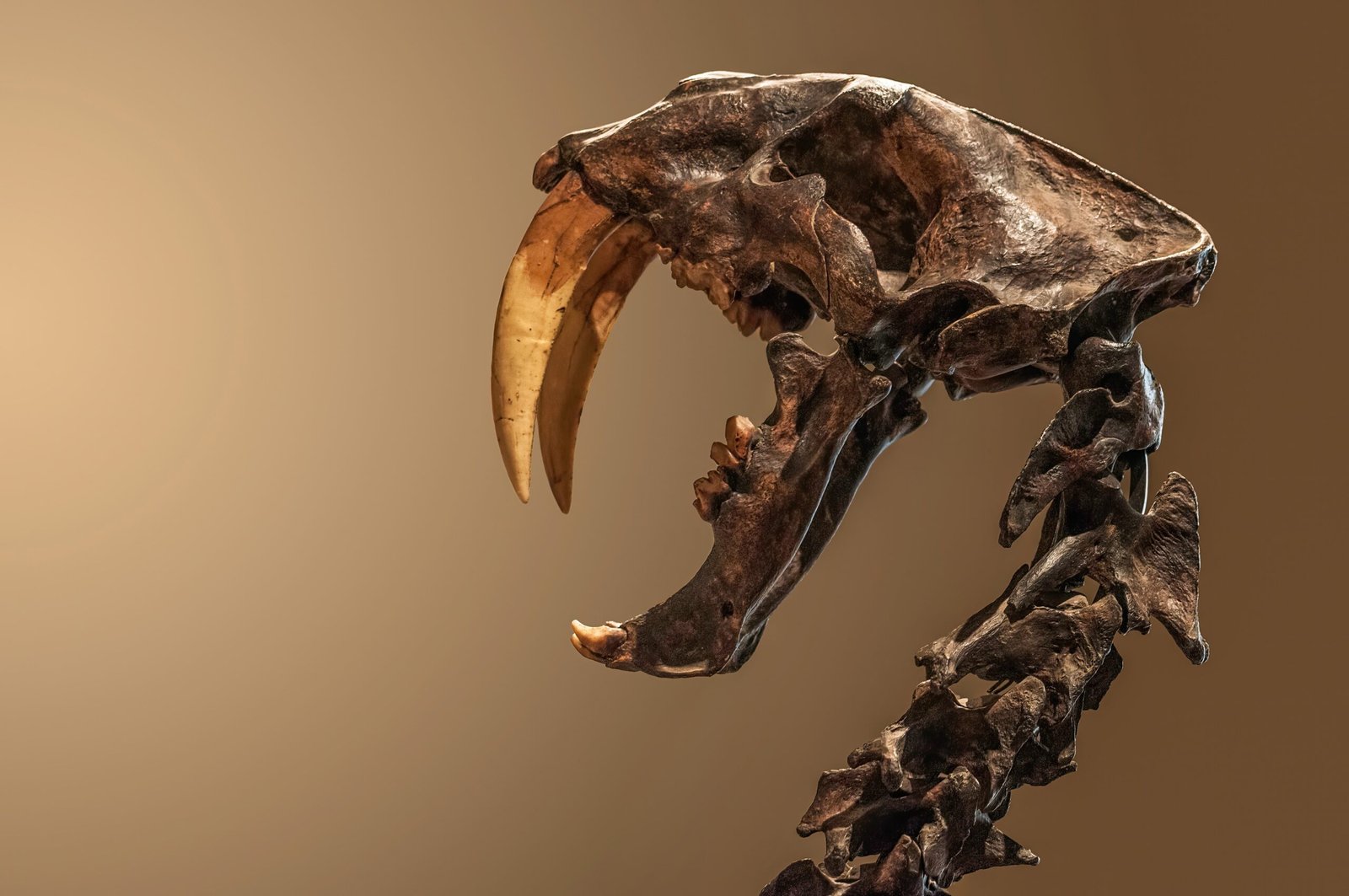
Crossing continents and adapting to ever-changing environments, Megantereon was more than a predator—it was a trailblazer. Its long journey through time and terrain reflects the resilience and daring woven into the fabric of life itself. Like all creatures, it was both explorer and survivor, carving out its place in a world full of uncertainty and challenge. Its story, preserved in fragments of bone and tooth, is a powerful reminder that evolution is a journey of courage as much as chance. Every species, past and present, carries a chapter of that grand narrative.
Why Megantereon Matters Today
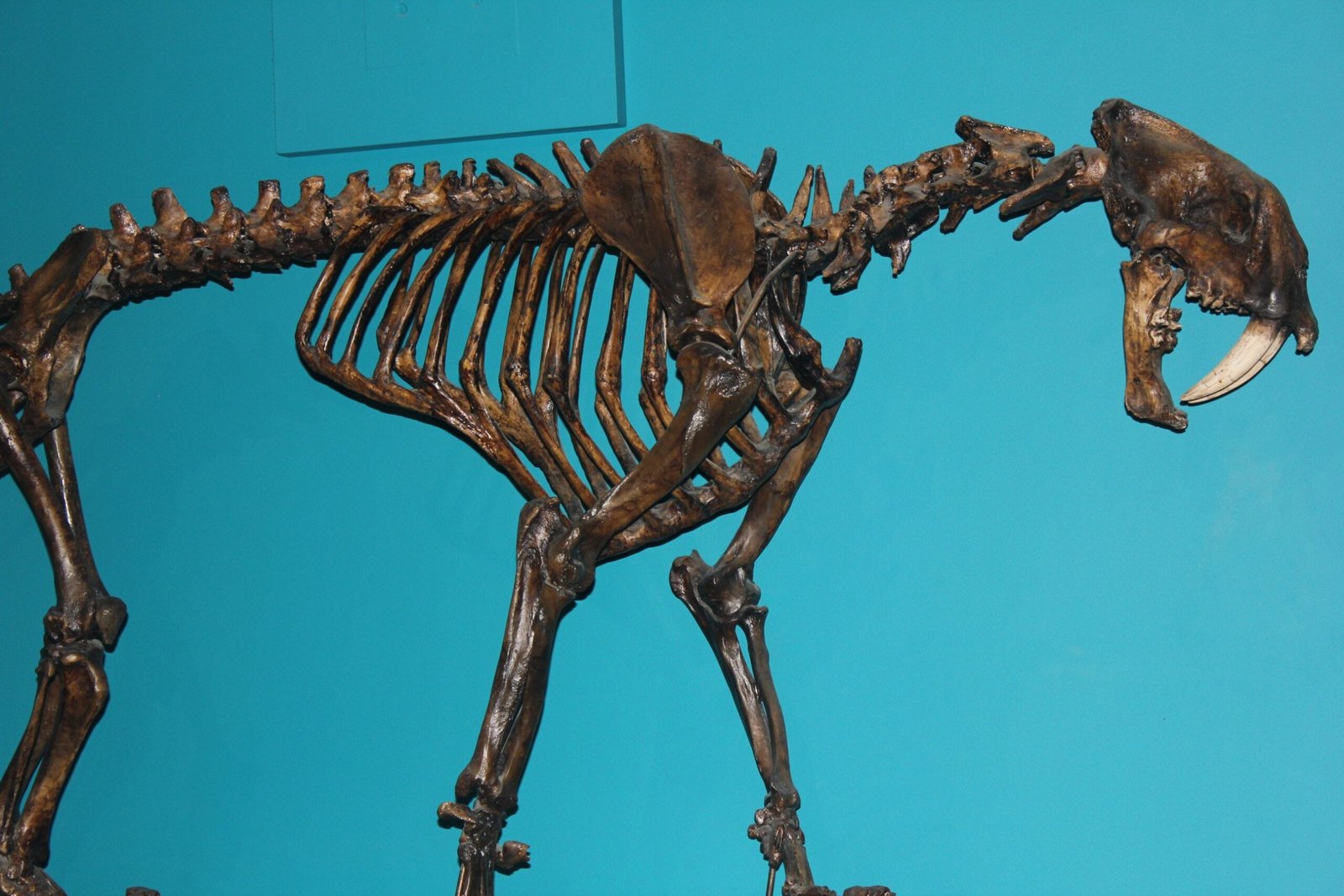
By studying Megantereon, we don’t just uncover the past—we connect with the enduring resilience of life itself. Its journey through shifting climates, fierce competition, and vast landscapes is a testament to the power of adaptation and survival. This ancient predator’s story bridges deep time with our present, reminding us that every creature, no matter how long gone, has shaped the world we now inherit. In honoring Megantereon, we honor the wild beauty and raw tenacity that once ruled the Earth—and that still pulses through the natural world today.
A Glimpse Into Deep Time
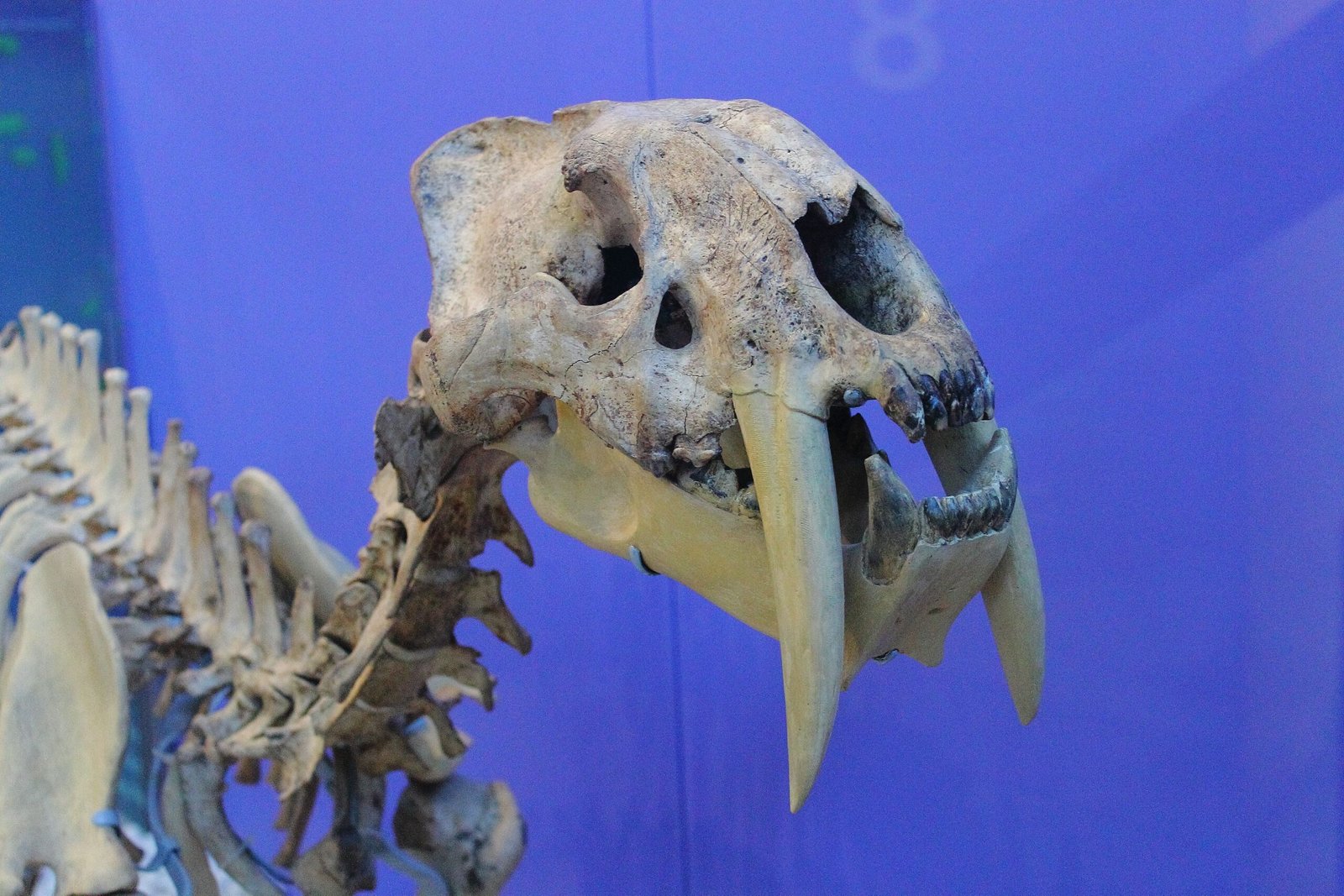
To imagine Megantereon is to step into a lost chapter of Earth’s history—a world where survival depended on patience, intelligence, and silent strength. In this vanished realm, cats like Megantereon reigned not by brute force alone, but through finely tuned instincts and strategic mastery. Though that world has faded, it lingers beneath our feet, hidden in stone and soil, waiting to be uncovered. Each fossil is a doorway, each discovery a spark that brings the past to life. And for every curious mind, Megantereon’s story is an invitation to explore, question, and wonder.

Suhail Ahmed is a passionate digital professional and nature enthusiast with over 8 years of experience in content strategy, SEO, web development, and digital operations. Alongside his freelance journey, Suhail actively contributes to nature and wildlife platforms like Feline Fam, where he channels his curiosity for the Feline into engaging, educational storytelling.
With a strong background in managing digital ecosystems — from ecommerce stores and WordPress websites to social media and automation — Suhail merges technical precision with creative insight. His content reflects a rare balance: SEO-friendly yet deeply human, data-informed yet emotionally resonant.
Driven by a love for discovery and storytelling, Suhail believes in using digital platforms to amplify causes that matter — especially those protecting Earth’s biodiversity and inspiring sustainable living. Whether he’s managing online projects or crafting wildlife content, his goal remains the same: to inform, inspire, and leave a positive digital footprint.






